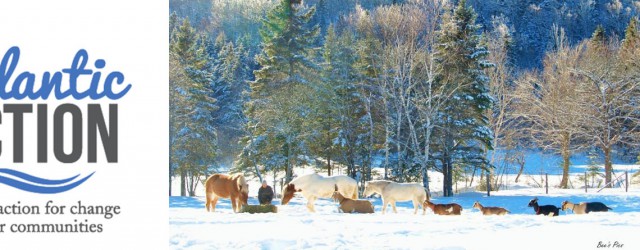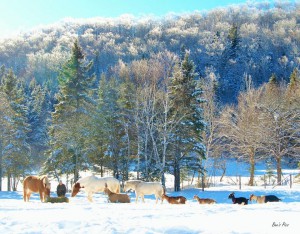The application to have your say on the National Energy Board (NEB)’s review of TransCanada’s Energy East oil pipeline proposal is coming to an end March 3.
You still have time and lots of reasons to apply! Here are 5:
1. Our precious rivers, streams and creeks: Did you know that TransCanada’s pipeline route through New Brunswick would cross our waterways 281 times? We created an interactive map so you can zoom right in and see which of your local and favourite waters are in the direct path of the pipeline. A spill would forever harm our fishing holes, swimming spots, canoe routes and wildlife habitat.
2. Our majestic Bay of Fundy: The pipeline ends beside our most highly-prized tourism attraction: the Bay of Fundy. Can you imagine the highest tides in the world rolling back to reveal tiny sunken tar balls on the exposed ocean floor? We do not know how the Fundy’s high tides and thick fog will exacerbate a spill and slow down our already non-existent emergency response.
3. Our endangered Right whale: The Right whale is one of the most endangered whales on the planet and this inquisitive creature should be considered just as important as Quebec’s playful Beluga. TransCanada nixed Cacouna, Quebec as an oil terminal site because it’s an important beluga nursery ground. That leaves the Bay of Fundy at Saint John as Energy East’s only export oil terminal location currently on the table, putting our Right whale, tourism and fisheries jobs at risk for TransCanada’s reward.
4. Our farmers and woodlot owners: You may be one of the hard-working folks who bring food to our tables or sustainably manage the back 40 that’s been in your family for generations. New National Energy Board regulations have shifted the burden of constructing, operating and maintaining safe pipelines to farmers and woodlot owners. Even J.D. Irving, Ltd. is “vitally concerned” about the portion of the pipeline that would pass through its Crown-leased lands in New Brunswick.
5. Our community health and safety: Bitumen produced in the tar sands is thick and requires dilution with toxic chemicals to ship through pipelines. TransCanada says it can respond to a spill within 10 minutes. Even so, that would still spill 1 million litres of sticky oil–enough to fill a hockey rink to the boards. At a time of cutbacks to local fire services, do our emergency services have the resources to design and carry out contingency planning for spills, accidents, or malfunctions that could happen during the construction and operation of this pipeline?
We know you have your own reasons why you’re concerned about the pipeline. Jot them down over the weekend and submit them to the National Energy Board’s review before 3 p.m. local time, March 3.
If you need help filling out the application to have a say on the public process that could approve or reject this pipeline, we’re here to assist. We have this step-by-step guide and video that explains more. You can also fill out this form and we’ll contact you. You can also contact Tracy at 506 458-8747 or tracy.glynn@
Conservation Council of New Brunswick /
Conseil de conservation du Nouveau-Brunswick
180 Saint John St.,
Fredericton, NB
E3B 4A9
Tel: 506 458-8747
www.conservationcouncil.ca
Facebook / Twitter


